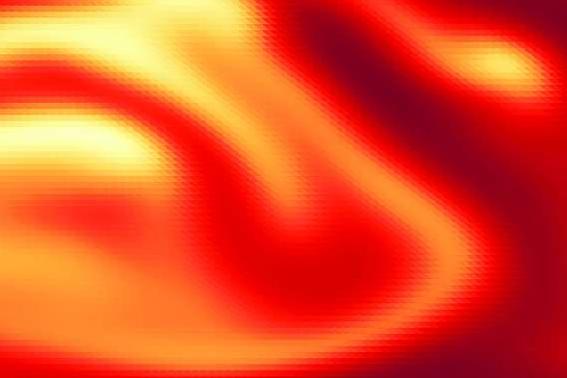博文
MIT: 以人工智能的新方式看到核聚变实验的等离子体边缘
 精选
精选
||
MIT: 以人工智能的新方式看到核聚变实验的等离子体边缘
诸平

之前介绍了“中国托卡马克装置创过热等离子体新纪录:将超亿℃维持长达1056秒”。又看到美国麻省理工学院(Massachusetts Institute of Technology简称MIT)2022年1月6日的报道,以人工智能的新方式看到核聚变实验的等离子体边缘(Seeing the plasma edge of fusion experiments in new ways with artificial intelligence or Helping to make nuclear fusion a reality)。现简要介绍如下,仅供参考。
为了使聚变能成为世界能源网的可行资源,研究人员需要了解等离子体的湍流运动。等离子体是在反应堆容器中旋转的离子和电子的混合物。等离子体粒子在被称为托卡马克(tokamaks)的环形室跟随磁场线之后,必须受足够长的时间融合设备限制以产生净能量显著提升,但当等离子体的高温边缘(超过100万℃)距离容器的较冷固体壁只有几厘米远时,这就是一个挑战。
麻省理工学院等离子体科学与聚变中心(MIT's Plasma Science and Fusion Center简称MIT's PSFC)工作的核科学与工程系博士生Abhilash Mathews认为,等离子体边缘是一个特别丰富的未解问题的来源。湍流边界(turbulent boundary)对理解等离子体限制、供给燃料和可能撞击材料表面的潜在破坏性热通量,这些影响聚变反应堆设计的因素都是极为重要的。
为了更好地理解边缘条件,科学家们专注于利用数值模拟来模拟这一边界处的湍流,这将有助于预测等离子体的行为。然而,该区域的“第一原理”模拟是聚变研究中最具挑战性和耗时的计算之一。如果研究人员能够开发出运行速度更快,且具有量化准确性的“简化”计算机模型,那么其研究进展将会加快。
几十年来,托卡马克物理学家(tokamak physicists)在实验中经常使用简化的“双流体理论(two-fluid theory)”,而不是高保真度模型来模拟边界等离子体,尽管准确性存在不确定性。在最近发表的两篇文章中,Abhilash Mathews开始用一种新方法直接测试这个简化的等离子体湍流模型的准确性:他将物理和机器学习结合起来。
Abhilash Mathews解释说:“一个成功的理论应该能够预测你将要观察到的东西,如温度、密度、电势及流量等。正是这些变量之间的关系从根本上定义了湍流理论。我们的工作本质上是研究这两个变量即湍流电场和电子压力之间的动态关系。”
2021年8月13日发表于《物理评论E》(Physical Review E)的第一篇论文——A. Mathews, M. Francisquez, J. W. Hughes, D. R. Hatch, B. Zhu, B. N. Rogers. Uncovering turbulent plasma dynamics via deep learning from partial observations. Physical Review E, 2021, 104(2): 025205 – Published 13 August 2021. DOI: 10.1103/PhysRevE.104.025205. https://journals.aps.org/pre/abstract/10.1103/PhysRevE.104.025205.就是采用了一种新的深度学习技术,使用人工神经网络来建立控制简化流体理论的方程表示。在这个框架下,Abhilash Mathews演示了一种计算等离子体中电子压力波动湍流电场的方法,该方法与简化流体理论一致。通常用来将电场与压力联系起来的模型,在应用于湍流等离子体时就会失效,但这个模型即使在噪声压力测量中也很可靠。
2021年11月初发表在《等离子体物理学》(Physics of Plasmas)上的第二篇论文—— A. Mathews, N. Mandell, M. Francisquez, J. W. Hughes, A. Hakim. Turbulent field fluctuations in gyrokinetic and fluid plasmas. Physics of Plasmas, 2021, 28(11): 112301 DOI: 10.1063/5.0066064. Published Online: 01 November 2021. https://doi.org/10.1063/5.0066064. Abhilash Mathews作为第一作者,进一步研究了这种联系,并将其与高保真度湍流模拟进行了对比。这种史无前例的对不同模型间湍流的比较,以前很难精确评估。Abhilash Mathews发现,在与现有聚变装置相关的等离子体中,简化流体模型预测的湍流场与高保真计算一致。从这个意义上说,简化湍流理论是可行的。但要完全验证它,“应该检查每个变量之间的每个连接,”Abhilash Mathews说。
Abhilash Mathews的导师、首席研究科学家杰里·休斯(Jerry Hughes)指出,等离子体湍流是出了名的难以模拟,比我们在空气和水中看到的湍流还要难。“这项工作表明,在适当的条件下,基于物理的机器学习技术可以从有限的一组观察开始,描绘出快速波动的边缘等离子体的非常完整的画面。我很高兴看到我们可以把它应用到新的实验中,在这些实验中,我们从来没有观察到我们想要的每个量。”
这些基于物理学的深度学习方法为测试旧理论和扩展新实验观察到的东西铺平了新道路。美国德克萨斯大学奥斯丁分校核聚变研究所(Institute for Fusion Studies at the University of Texas at Austin)的研究科学家大卫·哈奇(David Hatch)认为,这些应用是一项有前途的新技术的开始。他说:“Abhilash Mathews的工作是一项具有广泛应用潜力的重大成就。例如,给定特定等离子体量的有限诊断测量,物理信息机器学习(physics-informed machine learning)可以推断出附近区域的额外等离子体量,从而增强给定诊断提供的信息。该技术也为模型验证开辟了新的策略。”
Abhilash Mathews看到了未来令人兴奋的研究前景。他说:“将这些技术转化为真实边缘等离子体的聚变实验是我们眼前的一个目标,而且工作目前正在进行中。但这仅仅是个开始。”
上述介绍,仅供参考。欲了解更多信息,敬请注意浏览原文或者相关报道。
More information: A. Mathews et al, Uncovering turbulent plasma dynamics via deep learning from partial observations, Physical Review E (2021). DOI: 10.1103/PhysRevE.104.025205.
https://journals.aps.org/pre/abstract/10.1103/PhysRevE.104.025205
One of the most intensely studied aspects of magnetic confinement fusion is edge plasma turbulence which is critical to reactor performance and operation. Drift-reduced Braginskii two-fluid theory has for decades been widely applied to model boundary plasmas with varying success. Towards better understanding edge turbulence in both theory and experiment, we demonstrate that a physics-informed deep learning framework constrained by partial differential equations can accurately learn turbulent fields consistent with the two-fluid theory from partial observations of electron pressure which is not otherwise possible using conventional equilibrium models. This technique presents a paradigm for the advanced design of plasma diagnostics and validation of magnetized plasma turbulence theories in challenging thermonuclear environments.
A. Mathews et al, Turbulent field fluctuations in gyrokinetic and fluid plasmas, Physics of Plasmas. 2021, 28(11): 112301. DOI: 10.1063/5.0066064. Published Online: 01 November 2021. https://doi.org/10.1063/5.0066064
A key uncertainty in the design and development of magnetic confinement fusion energy reactors is predicting edge plasma turbulence. An essential step in overcoming this uncertainty is the validation in accuracy of reduced turbulent transport models. Drift-reduced Braginskii two-fluid theory is one such set of reduced equations that has for decades simulated boundary plasmas in experiment, but significant questions exist regarding its predictive ability. To this end, using a novel physics-informed deep learning framework, we demonstrate the first ever direct quantitative comparisons of turbulent field fluctuations between electrostatic two-fluid theory and electromagnetic gyrokinetic modeling with good overall agreement found in magnetized helical plasmas at low normalized pressure. This framework presents a new technique for the numerical validation and discovery of reduced global plasma turbulence models.
https://blog.sciencenet.cn/blog-212210-1320003.html
上一篇:中国托卡马克装置创过热等离子体新纪录:将超亿℃维持长达1056秒
下一篇:“魔角”石墨烯揭示了磁性惊喜